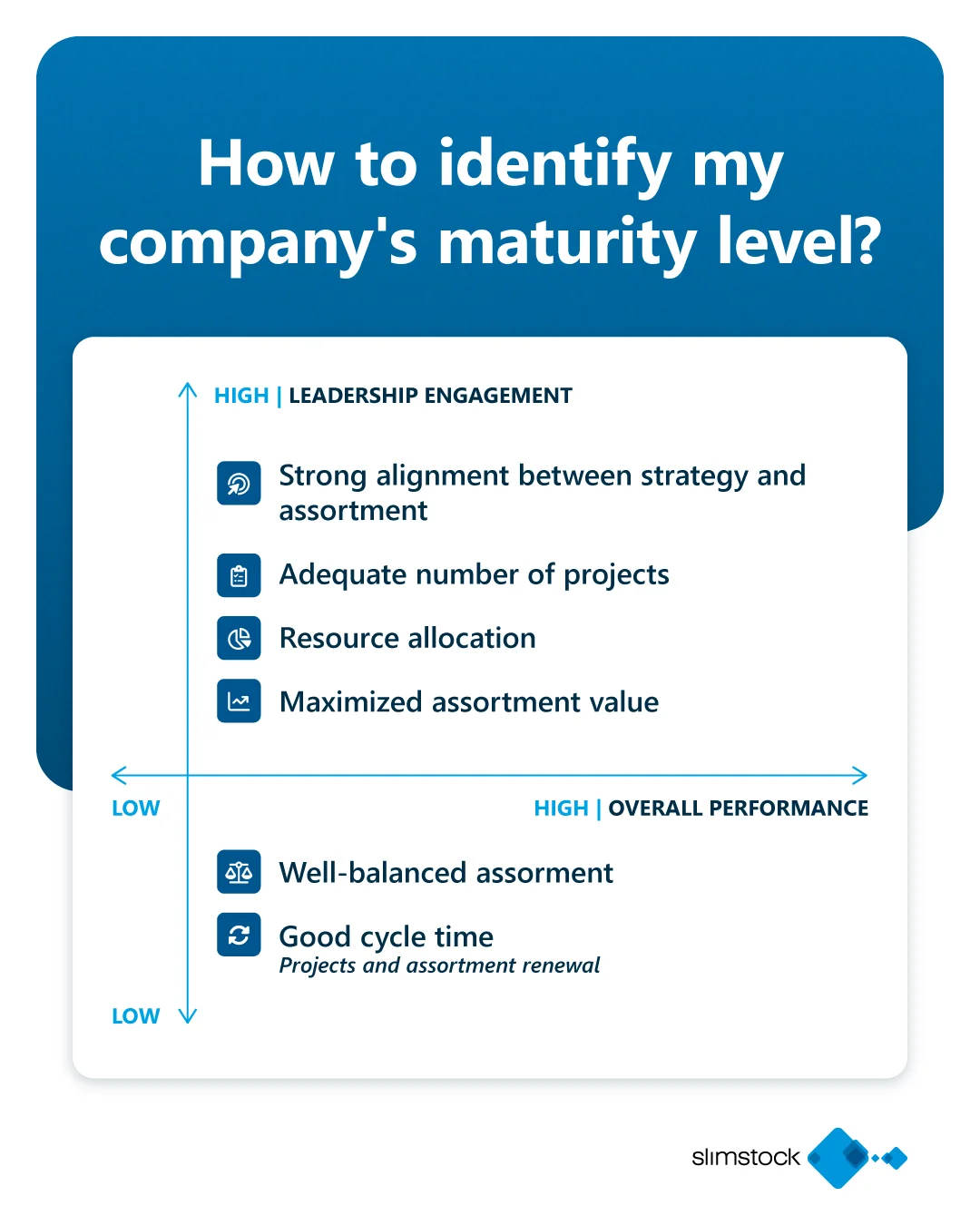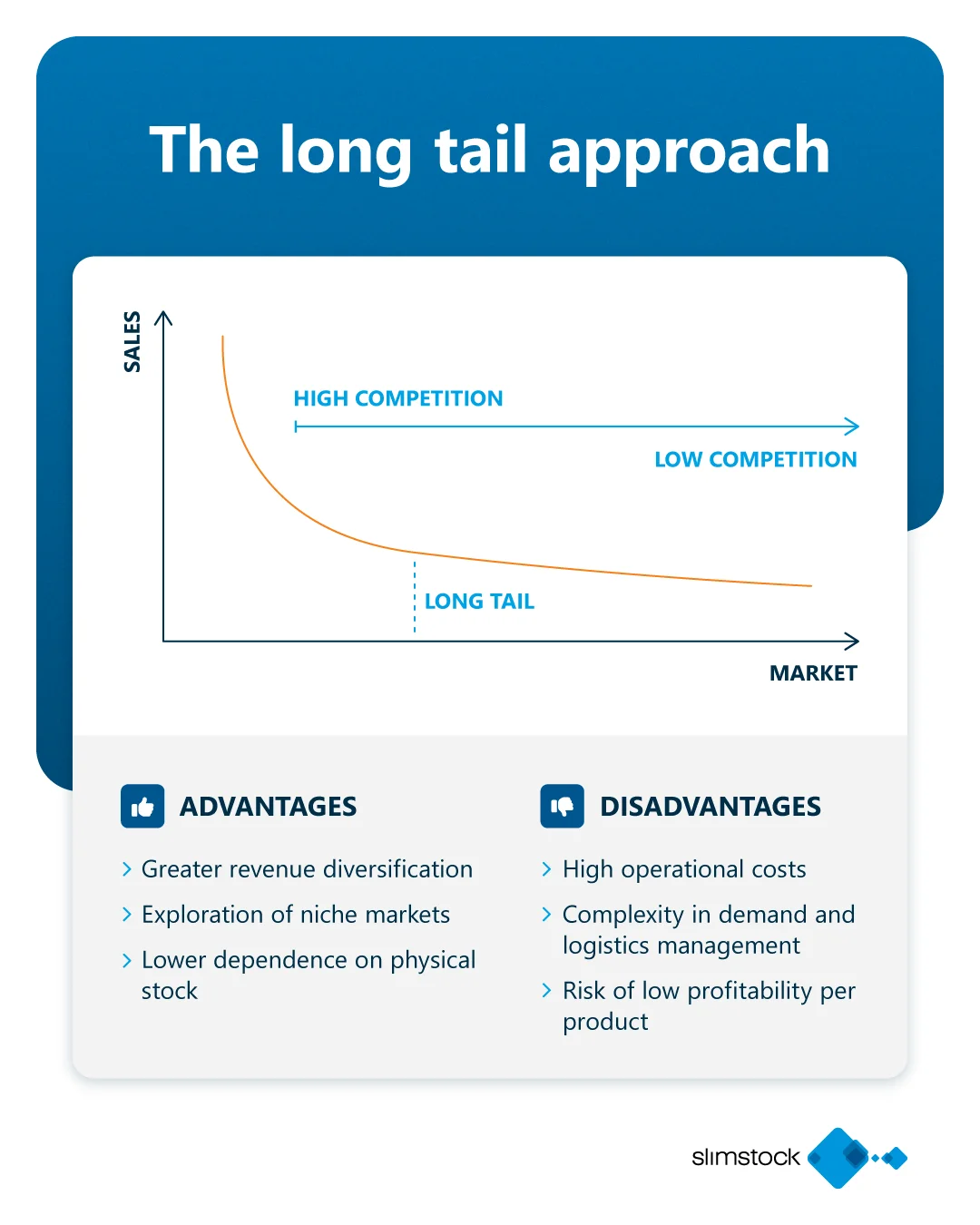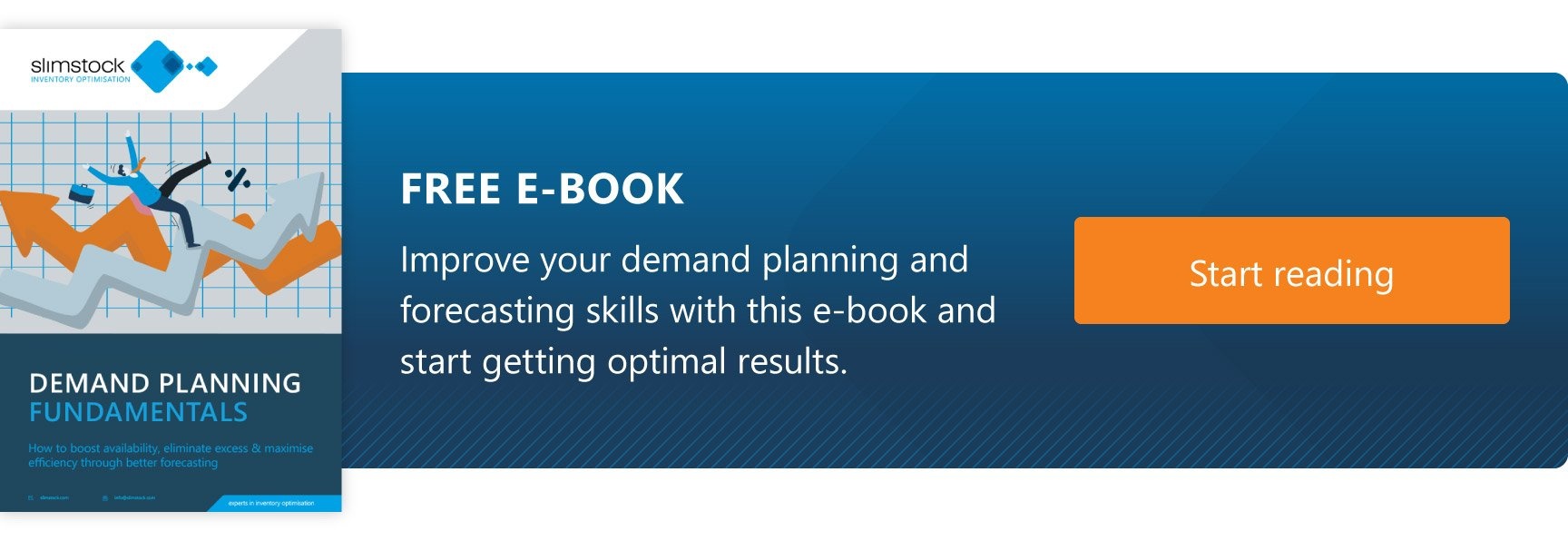Table of contents
Table of contents- Assortment management: how to formulate strategic decisions to maximise results
- What is assortment management?
- Assortment as a pillar of business strategy
- The importance of continuous review and the use of technology
- The long tail strategy: is it worth it?
- Tools for assessing portfolio health
- Toolkit: key questions for effective decision-making
- Conclusion
Assortment management plays a critical role in shaping a company’s operational efficiency and profitability. It is closely linked to assortment planning, which helps businesses structure their product mix effectively. In this article, we discuss strategies to optimise product portfolios and align offerings with market demands, thereby reducing costs and enhancing competitiveness.
What is assortment management?
Assortment management is the process of selecting, categorising, and optimising a company’s product offering to align with market demands and business objectives. It involves analysing sales performance, customer preferences, and supply chain constraints to ensure that the right products are available at the right time.
A well-organised assortment includes key product details (such as descriptions, specifications, and images) that help customers make informed purchasing decisions and improve their overall shopping experience.
Assortment as a pillar of business strategy
A company’s product assortment defines its strategic direction and balances inventory costs with customer service levels. According to market data, 32% of products sold today were launched more than five years ago, emphasising the importance of continually reviewing the portfolio.
But where should one start when the portfolio is extensive? First, it is very important to assess the company’s maturity in assortment management and identify the items that have the greatest impact on results.
For instance, a large assortment is not always advantageous. Studies show that an excessively diversified portfolio can increase management complexity, reduce operational efficiency and confuse consumers.
Specialised literature from the 1980s and 1990s suggested that a broader assortment equated to better customer perception. However, recent studies such as those by Broniarczyk and Hoyer (2010) indicate that an overload of choices can make decision-making more difficult and reduce consumer satisfaction, negatively impacting sales. The effect varies according to customer profiles:
- Those who know what they want prefer more variety.
- Undecided customers tend to benefit from a more streamlined and organised portfolio.
The importance of continuous review and the use of technology
The belief that “more is better” contrasts with the reality of inventory and logistics costs. Distribution feels this impact particularly strongly as it must manage a large volume of products, often without a proportional return. One of the main challenges is avoiding obsolete stock. It is estimated that 25% of unsold products worldwide result from an initial purchase mistake.
Periodic portfolio review is essential to ensure the sustainability of the business. A study published in the Journal of Operations Management (Yildiz et al., 2024) showed that companies conducting frequent reviews managed to reduce inventory waste by 25% and improve response times to demand changes by 35%.
In this context, technology plays a central role. Artificial intelligence, machine learning and blockchain are increasingly common tools for optimising assortment management. According to a study published by the Journal of Distribution Science, automation and predictive analytics have increased demand forecasting accuracy by 25%, positively impacting inventory levels and customer satisfaction.
The long tail strategy: is it worth it?
The long tail strategy focuses on the diversity of niche products based on the idea that the combined sales of less popular items can surpass those of the most sought-after products. This model has been successful for digital platforms like Netflix and Amazon Prime Video, which structure their catalogues to cater to a variety of consumer profiles.
An example of this approach in physical retail can be found in supermarkets. Some chains prioritise variety and convenience, offering everything from popular brands to niche products at higher prices. Others opt for a more streamlined selection, ensuring lower costs and more affordable prices. The same concept can be applied to assortment management: a broad mix may attract customers willing to pay more for variety, while a leaner portfolio can generate efficiency and cost reductions.
Tools for assessing portfolio health
Effective assortment management requires metrics and tools to support decision-making. Some of the key tools include:
- ABC/XYZ classification: this helps segment products by their impact on revenue and demand predictability.
- GMROI (Gross Margin Return on Investment): it measures the relationship between profit margin and inventory turnover.
- Product Lifecycle: it allows you to identify the stages of each item (introduction, maturity, and end-of-life) to optimise decisions.
Toolkit: key questions for effective decision-making
To improve assortment management, ask the following questions:
- What is the reason for launching this product?
- Was it a suggestion from the supplier or a customer demand?
- Does it replace a technology that didn’t exist before?
- Do I already have similar items in the portfolio?
- Does it make sense to add similar products?
- How long will this be considered a new launch?
- What is the success factor for this product?
- When should it be discontinued?
- Is there a planned substitute item?
- How long will it take for the first purchase to turn over?
- Does the supplier accept returns if the item doesn’t sell?
Conclusion
Assortment management is a dynamic process that requires constant review, strategic alignment, and the adoption of technology to optimise decisions. Companies that structure their approach are able to reduce waste, improve demand predictability and increase resilience in the face of market fluctuations.
Whether through a streamlined or diversified portfolio, success hinges on data-driven planning, adaptability and the continuous review of strategies to meet customer needs and market changes.
Discover how our assortment management solution can help you optimise your product portfolio and inventory.







